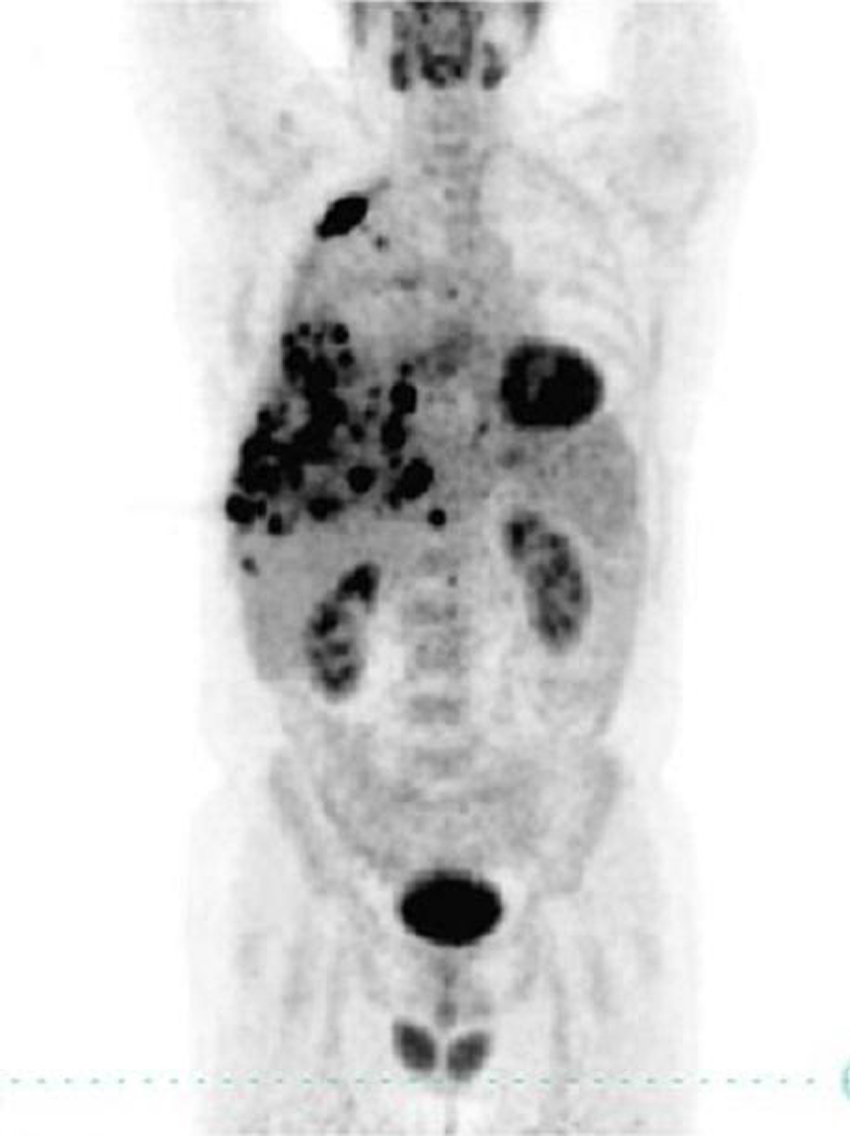El mesotelioma pleural maligno es un tumor relativamente raro pero altamente agresivo, con una expectativa media de vida entre 9 y 17 meses, relacionado con la exposición al asbesto. El dolor torácico y la disnea son sus manifestaciones clínicas más frecuentes. La terapia más empleada es la cirugía acompañada de tratamiento quimioterápico. La valoración prequirúrgica, tras el tratamiento quimioterápico, ha sido realizada a través de la resonancia magnética y la tomografía axial computarizada (TAC). Sin embargo, estas técnicas no permiten predecir de forma precoz la respuesta a la terapia, dada la lenta modificación estructural del tumor. La presentación de esta nota clínica invita a revisar y conocer la creciente utilidad de la imagen PET-TAC, con 18F-FDG, en la estadificación prequirúrgica del mesotelioma pleural maligno y su influencia en la selección del tipo de cirugía más apropiada.
Malignant pleural mesothelioma is a relatively rare, but highly aggressive, tumor, associated to exposure to asbestos, with a life expectancy between 9 and 17 months. Chest pain and dyspnea are the most frequent symptoms. The most commonly used therapy is surgery accompanied by chemotherapy. Preoperative assessment, after chemotherapy, has been done using magnetic resonance imaging and computed tomography (CT). However, these techniques cannot predict early response to therapy, because of the slow structural change of the tumor. The aim of this case report is to review and learn about the growing use of PET-CT imaging with 18F-FDG in the preoperative staging of malignant pleural mesothelioma and its influence in selecting the most appropriate type of surgery.
Artículo
Comprando el artículo el PDF del mismo podrá ser descargado
Precio 19,34 €
Comprar ahora









